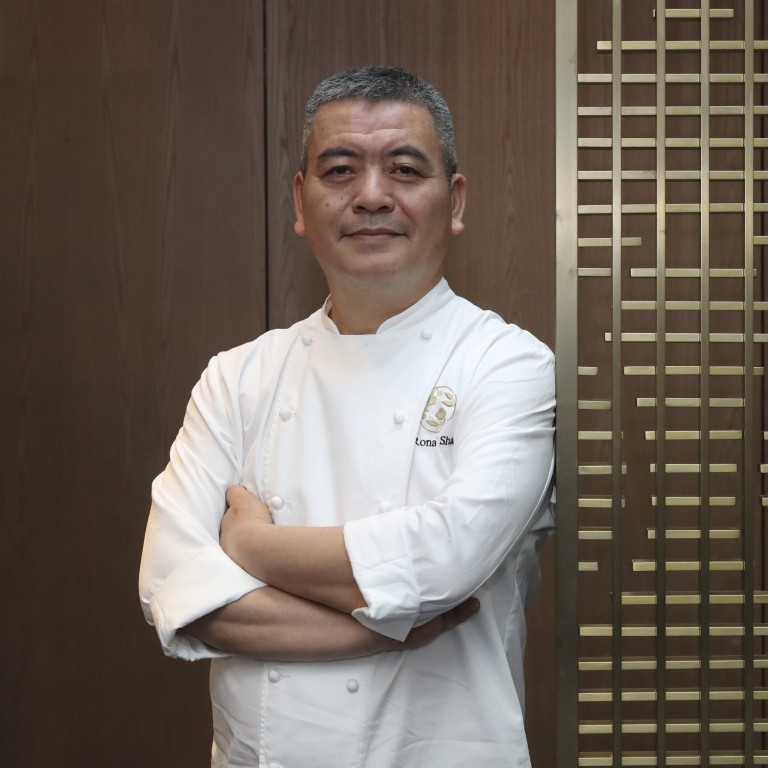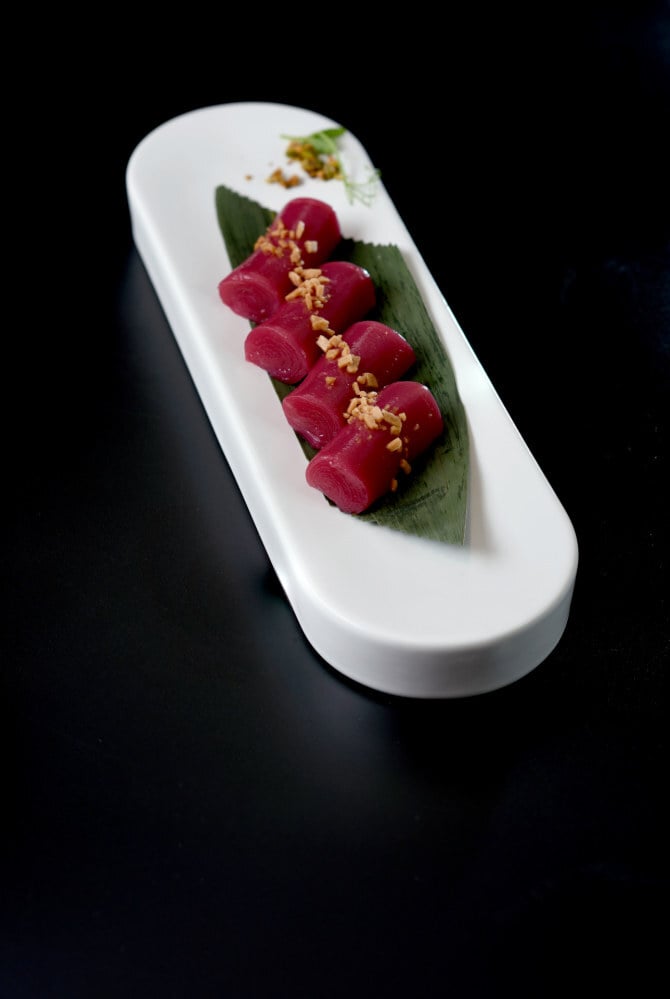
Profile | Sichuan chef for whom cooking was just a job until he learned to love it and taught fellow cooks at culinary school in Hong Kong
- Ronald Shao Tak-lung’s first job in a Sichuanese restaurant in Hong Kong when he was 16 was to wash and prep ingredients, because he didn’t know how to cook
- He took jobs in Manila, Jeddah and Mumbai, before returning to Hong Kong and taking on a teaching position at the Chinese Culinary Institute
How did you come to Hong Kong? “I was born in Chengdu, Sichuan, but my father died when I was young so it was just me, my older sister and mother. My paternal grandfather had already moved to Hong Kong before 1949 for a business venture, but he lost money and didn’t want to go home.
“I didn’t meet him until he came to see us and brought me back to Hong Kong, in 1981, when I was 15 years old, to look after him. At the time, he was working for The Star [newspaper], where he wrote stories on entertainment and horse racing. When I arrived, I learned to speak Cantonese and distributed newspapers for The Star in Wan Chai from 1am to 7am.”
What was your first kitchen job? “A few months later, when I turned 16, my grandfather got me a job in a Sichuanese restaurant. I didn’t know how to cook, so I washed vegetables and shrimp, and prepared raw ingredients.
“I finished my tasks quickly so I could watch the chefs and learn how to cook. Nevertheless, my weakness was not finding solutions and arguing with people. My master chef didn’t like me at first because he found me bothersome, but I learned quickly.”

How much did you earn? “My salary was HK$850 a month – with tips it was just under HK$1,000 – while chefs made HK$2,000. When I got my first salary, I held the money tightly in my pocket because I had never earned so much before; my mother made only HK$36 back home.
“I was so excited that by the time I got to my grandfather’s, the bills were damp. I gave the money to him and he gave me an allowance. I was happy to earn money and wanted to learn more skills. After one and a half years, I could do simple things like make dumplings and stir fry noodles.”
What else did you learn? “At the time I didn’t really enjoy cooking, it was just to survive. Most Chinese chefs specialised in one thing – like dim sum or roast meats – but I wanted to learn everything.
“When I had free time, I watched the dim sum chef make dumplings and then he asked me to help him. After lunch service, some chefs played mahjong, others ate dim sum. I grabbed a carrot or radish and learned how to carve flowers, birds and pagodas.”
What was it like to work overseas? “In 1989, I went to Manila, in the Philippines, to work at a hotel. At 24 years old, I didn’t know any English, only yes and no, but I wanted to make more money. I worked there for less than a year. Although I knew how to cook, I didn’t have much experience managing a restaurant and knowing how to adapt to the market.

“Two years later, a friend introduced me to a restaurant in Saudi Arabia, but just as I arrived in Jeddah, the Gulf war broke out. Every day, I saw military planes flying overhead. I was there for two years.
“Before I went back to Hong Kong, the boss wanted me to open a restaurant in Egypt with his son. There was only one Chinese restaurant, in the Sheraton, where the bestselling dish was Peking duck. Even though the son had rented a space in another hotel, we couldn’t open the restaurant because we couldn’t even buy soy sauce there.”
What was it like working in India? “I went to Mumbai in 1994 and worked at the Taj Mahal Palace Hotel. The Chinese restaurant’s capacity was 120 people and I served as many as 400 guests a day. It was a very good business.
“My monthly salary was US$2,000, but I later found out an Italian chef at another restaurant there earned US$7,000 a month, serving a fraction of the customers I did. The boss refused to raise my salary but I still had a month to go before my contract ended.
“I had heard if you tell Indians you’re getting married, they are fine with you leaving early. I had a girlfriend, who I’d met in Chongqing, so I went back and married her.”
They offered me a job at The Eight, but I didn’t want it, so I suggested a big salary – they said sure. The work itself was fine, but I quit after a year because I gambled too much
What did you do there? “Because my wife couldn’t come with me to Hong Kong right away, I opened a small eatery in Chongqing for a year. She got pregnant and that motivated me to look after my family, so I went back to Hong Kong by myself in 1997.
“I helped Miramar Group open Yun Yan, a Sichuan restaurant that used to be in Times Square [in Causeway Bay]. Before, they had hired Chinese chefs to cook traditional dishes, but I was familiar with the Hong Kong palate and localised the menu. When my daughter was three years old, she and my wife migrated to Hong Kong.”
How did you get a job as an instructor at the Chinese Culinary Institute? “In 2001, the CCI needed someone who was knowledgeable in Sichuan cuisine to teach. Even though I had lots of work experience, I didn’t know how to teach so I was quite worried.
“Chefs I knew from Miramar Group introduced me to a culinary school in Chengdu, and I met an instructor there. I spent a month observing their teaching methods and going through their textbooks before feeling confident enough to teach.”
How did you find teaching? “My desk had a computer, but I only knew how to turn it on and off. I learned to type and look at emails. I had to type all my sheets out, character by character. Some students were just there to pass the time while others really wanted to learn and asked me to teach them stuff. For six years, I taught all kinds of things, like making dim sum, carving, chopping, stir frying.”

You also worked at the Grand Lisboa, in Macau. What was that like? “In 2009, I was working at the [Hong Kong] Jockey Club when a headhunter sent my CV to the Grand Lisboa. I wasn’t keen on the job but went for the interview and cooking trial anyway. They offered me a job at The Eight, but I didn’t want it, so I suggested a big salary – they said sure. The work itself was fine, but I quit after a year because I gambled too much!”
At Mián, you serve both Cantonese and Sichuan cuisines. Does the spiciness affect diners’ taste buds for other dishes? “The menu has a range of Cantonese, Shanghainese, Sichuanese and Fujianese dishes. Each dish has its strength and weakness. There isn’t a clash of flavours: Cantonese dishes are quite balanced, while Shanghainese and Sichuan ones use more seasoning, that’s all.
“We have guests from China, Hong Kong and Southeast Asia, so if you can offer all kinds of dishes it’s good. Food is constantly evolving, so we need to create new dishes for customers to try.”

